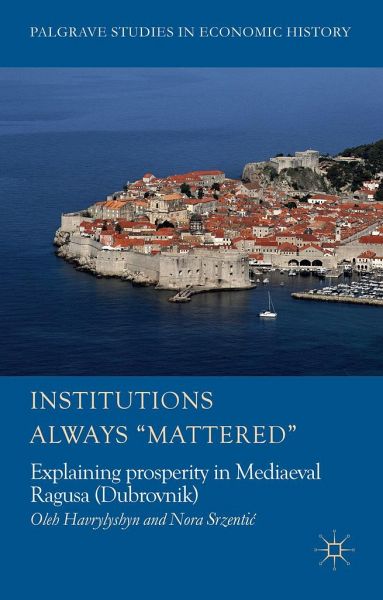
Institutions Always 'Mattered'
Explaining Prosperity in Mediaeval Ragusa (Dubrovnik)

PAYBACK Punkte
19 °P sammeln!
The medieval Republic of Ragusa (now Dubrovnik) was a prosperous small open economy, rivalling bigger competitors. This study collects together evidence on how Ragusa compared to other economies of the region, and addresses the difficult question of why it outperformed its Dalmatian rivals (Kotor, Split and Zadar).














